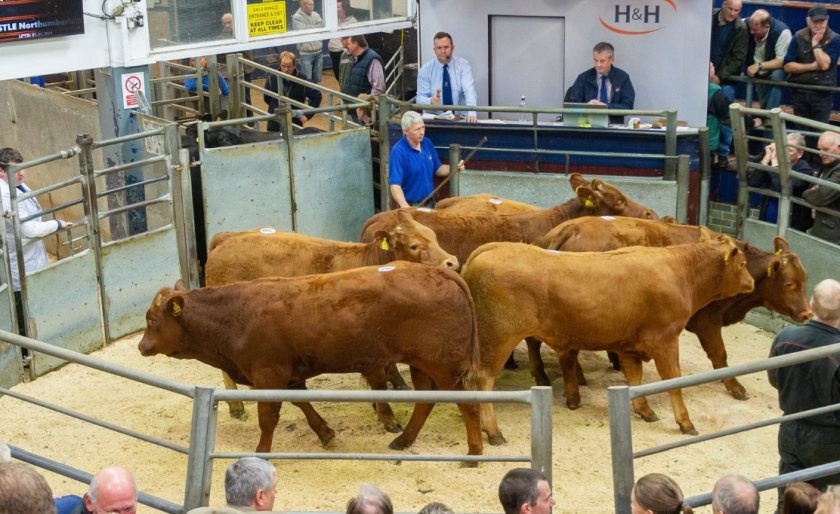
The latest throughput and turnover figures reveal a significant uplift in livestock values, underscoring the role of live auctions in supporting farmers during uncertain times.
Despite a climate of low farmer confidence, 2024 saw 10.7 million cattle, sheep, and pigs sold through the auction ring—including 6.7m slaughter animals and 4m store and breeding stock.
This activity generated a total turnover of nearly £2.5 billion, representing an increase of more than £220 million compared to the previous year.
The Livestock Auctioneers’ Association (LAA) attributed these gains to the live auction system's responsiveness to market forces, particularly amid tightening domestic supply due to a shrinking national herd and flock.
"What we are seeing with the latest figures, is that the live auction ring really supports that producer confidence, ensuring competition remains in the beef supply chain, driving those values as supply tightens,” said LAA executive secretary, Chris Dodds.
The positive trend has continued into 2025, with record-breaking prices observed across numerous categories.
Darlington Farmers Auction Mart recently became the first to break the £5 per kg barrier for clean cattle, with individual heifers reaching up to 526ppk.
At Welshpool, store cattle prices have hit unprecedented levels, with Charolais calves exceeding £2,000 and commercial cattle selling up to 558ppk.
Data from the LAA’s Market Prices platform indicates that, as of 12 April 2025, cull cow prices are up 53% compared to the same period in 2024, while prime cattle prices have risen by 43%.
In 2024, these increases translated to £105 per head for prime cattle, £61 for cull cows, and £71 for store cattle. Prime sheep also saw an average price increase of £25 per head.
Dairy farmers are returning to auction in greater numbers, a shift linked to the introduction of the Fair Dealings Obligation (Milk) regulations in 2024, which aim to improve transparency in contracts.
Over 5,500 additional dairy cows were sold through live auctions last year, fetching an average of £1,435 per head—up £125 year-on-year.
Purchasers are also favouring the live auction format for its consistency and quality. “Purchasers are favouring the live auction ring for the quality and availability of livestock, showcasing the best in British,” said Mr Dodds.
In addition to delivering financial benefits, livestock markets also offer vital social value to rural communities, he said, adding: “The liveweight trade is the good news story for the producer in these challenging times.
“Our markets are working tirelessly to achieve the best possible price for the livestock sold, while also providing that highly valued social hub.
"That makes our contribution to the wider rural economy and community so crucial.”
